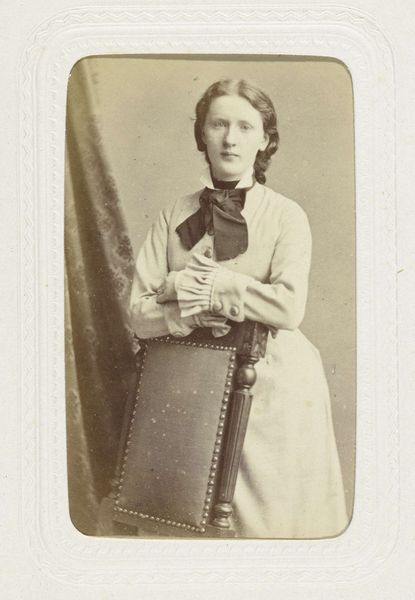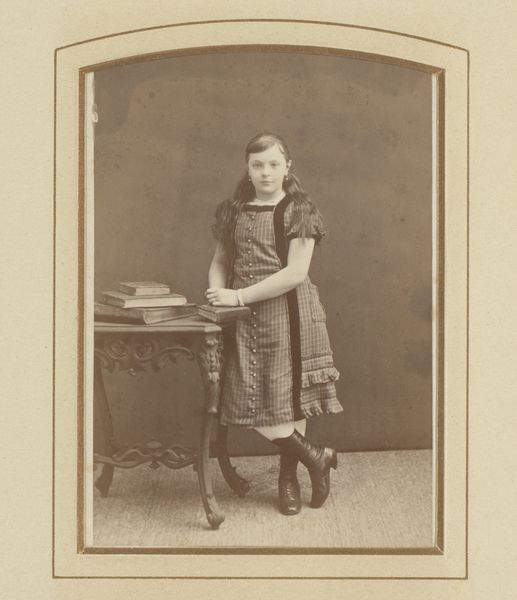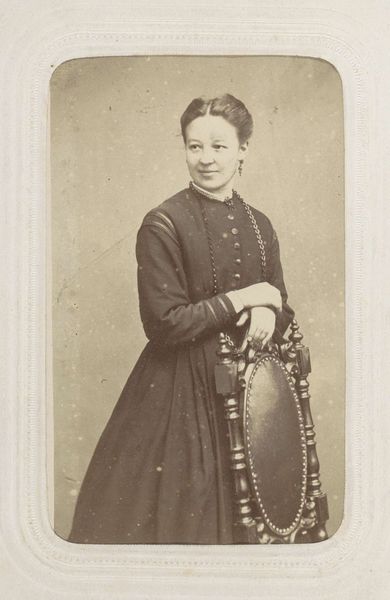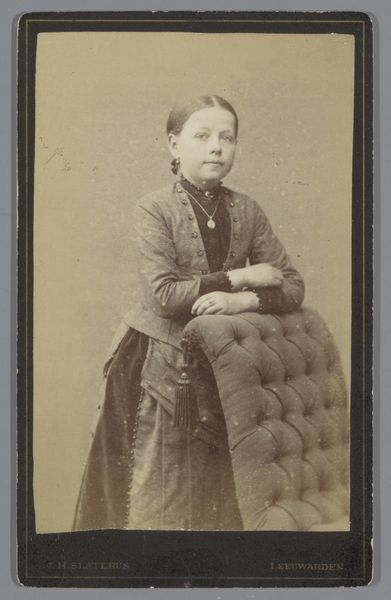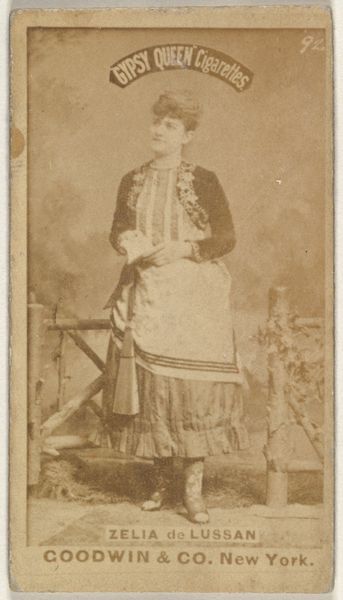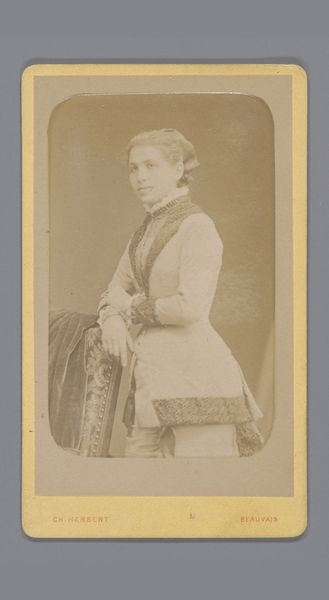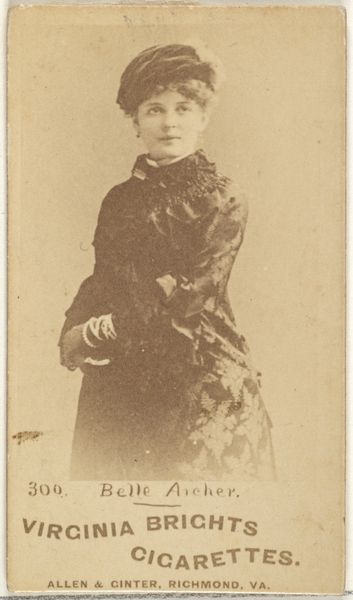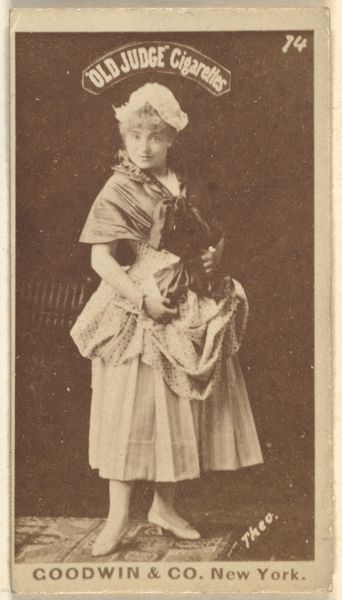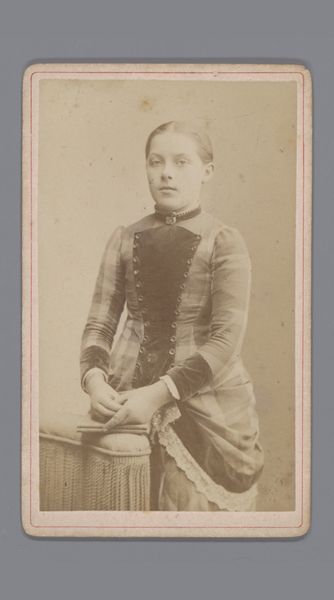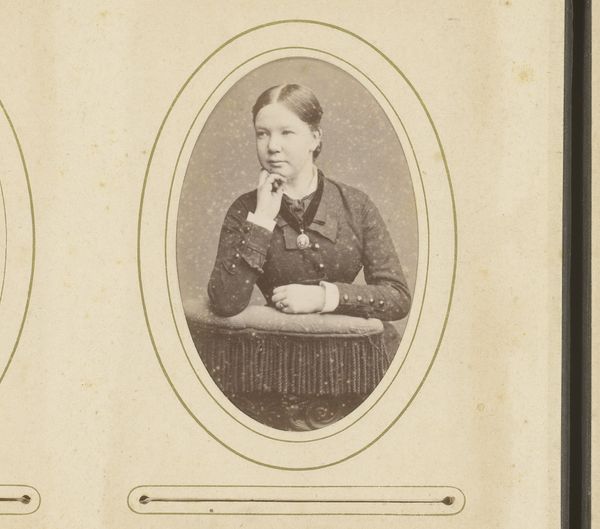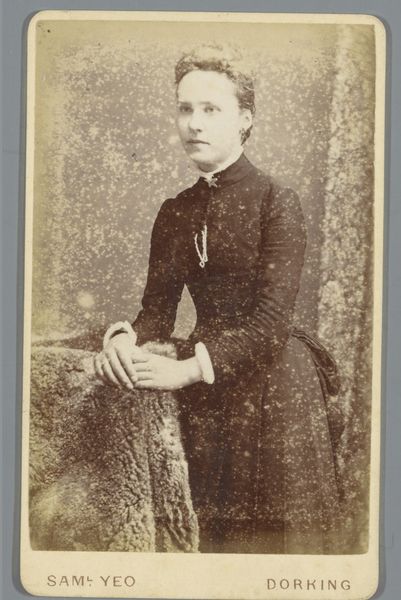
Studioportret van een vrouw in een lange jurk achter een stoel. c. 1863 - 1866
0:00
0:00
albertgreiner
Rijksmuseum
Dimensions: height 80 mm, width 54 mm, height 296 mm, width 225 mm
Copyright: Rijks Museum: Open Domain
Curator: Before us, we have a studio portrait from the Rijksmuseum, simply titled “Studioportret van een vrouw in een lange jurk achter een stoel,” or studio portrait of a woman in a long dress behind a chair by Albert Greiner. Created sometime between 1863 and 1866. It’s a gelatin silver print over an albumen print. Editor: The first thing that strikes me is the formality of the pose, and yet, there's also a sense of vulnerability. The woman’s gaze is direct, almost challenging, but the way she clasps the chair feels like she is seeking support. Curator: Absolutely, the Romanticism style really lends itself to these juxtapositions. Photography in this era was striving to legitimize itself as high art. Consider the controlled studio setting and the staged nature. These portraits reinforced societal norms but simultaneously offered individuals a way to craft their image for posterity. Editor: Right, the photograph becomes a powerful tool for social maneuvering and self-representation, but I also think of the restrictions placed upon women at this time. Was this photograph, in some way, a subtle act of resistance? Was this a conscious self-fashioning? Or did the woman want to subvert expectations? Curator: It’s possible. Her striped dress is itself not something one might expect. These subtle departures from convention speak to an evolving society where identity becomes something actively performed, captured, and disseminated. It raises the question: who were photographs being made for and what purpose? What did representation mean? Editor: And for whom did it not represent? The subject’s whiteness is central here and intersects with gender, class, and period. Photography helped construct these identity categories. How was she positioning herself relative to her status, versus that of those underrepresented, excluded from the same privilege of visibility? Curator: I agree that it opens doors to many such questions and reveals the layered societal structures in the mid-19th century. Thanks for your fresh perspective! Editor: It certainly gives one much to consider and dissect!
Comments
No comments
Be the first to comment and join the conversation on the ultimate creative platform.
